Search
Search Results
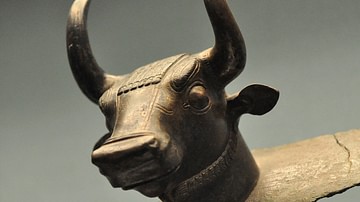
Definition
Urartu Civilization
Urartu, also known as the Kingdom of Urartu or the Kingdom of Van, was a civilization which developed in the Bronze and Iron Age of ancient Armenia, eastern Turkey, and northwestern Iran from the 9th century BCE. Controlling territories through...
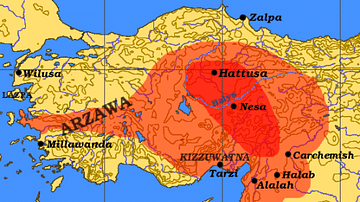
Definition
Kaskians
The Kaska or Kaskians were a tribe of the Pontus, northern Anatolia (today's Turkey), around the Kizil Irmak river mouth, bordering on and constantly harrasing the Hittite empire. That area is mostly mountainous in nature, and there the Kaska...
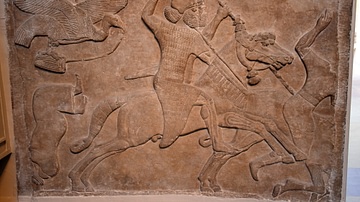
Image
Assyrian Battle Scene
An enemy horseman is ridden down by a pair of a armored cavalrymen in the Assyrian army. The hair style and shape of the beard suggests that these men are not Assyrians but foreign auxiliaries. A grim but authentic battlefield detail is the...
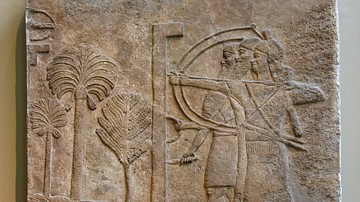
Image
Babylonia under Assyrian Siege
Date palms indicate that the city, most of which were on an adjacent slab, was probably Babylonia. It stood by a river or a canal. An Assyrian soldier holds a large body shield and two archers take aim. Assyrian, reign of Tiglath-pileser...
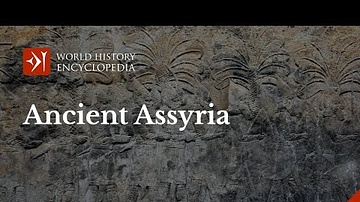
Video
A Short History of Assyria and the Neo-Assyrian Empire
Assyria has a long history, beginning in northern Mesopotamia and then expanding during the Neo-Assyrian Empire from Mesopotamia through Asia Minor, and down through Egypt. The empire began in the city of Ashur and went through many different...
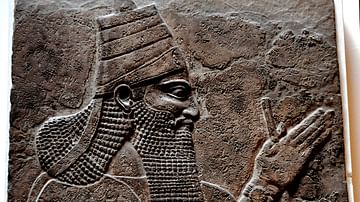
Image
King Tiglath-pileser III
An alabaster bas-relief depicting the Assyrian king Tiglath-pileser III. From the central palace, Nimrud (ancient Kalhu), Mesopotamia, northern Iraq. Neo-Assyrian era, circa 728 BCE. (The British Museum, London)
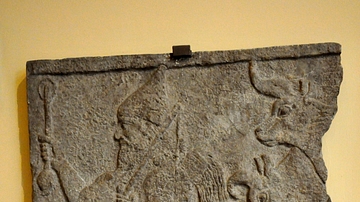
Image
A Wall Relief from Tiglath-Pileser III's Palace
A man holds a mace and a bow and a number of cows appear behind him. The name of the man is unknown. A fragment of a limestone wall relief from the palace of Tiglath-pileser III at Nimrud (ancient Kalhu; Biblical Calah). Neo-Assyrian era...
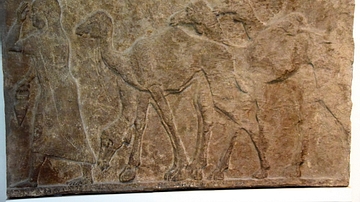
Image
Captured Camels from Arab Enemies of Tiglath-pileser III
The woman on the left and the herd of camels behind her are part of a procession of prisoners and booty captured during one of the military campaigns of Tiglath-pileser III (reigned 744-727 BCE) against Arab enemies. Assyrian, about 728 BCE...
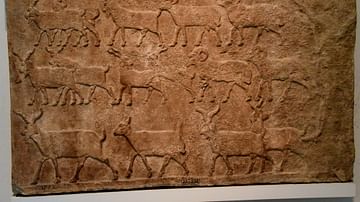
Image
Captured Flocks from Arab Enemies of Tiglath-pileser III
Sheep and goats, captured in a campaign against the Arabs are driven back to the Assyrian camp. This scene decorated the palace of King Tiglath-pileser III (reigned 744-727 BCE. Assyrian, about 728 BCE. From the Central Palace at Nimrud (ancient...
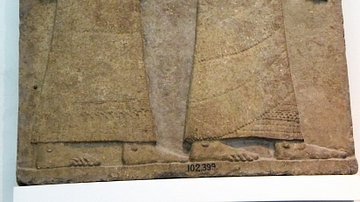
Image
King Tiglath-pileser III in a Ceremony
The Assyrian King Tiglath-pileser III (reigned 744-727 BCE) wears a ceremonial robe and holding a bow, once facing 2 high officials (no longer preserved but recorded in a drawing). Behind him, stands a beardless attendant holding a spear...